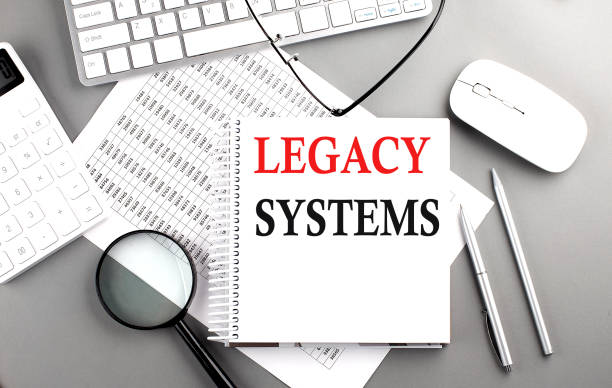
#SmartIndustry
5 February 2025
Custom IoT solutions : boost industrial growth
The Internet of Things (IoT) has become an essential lever for companies looking to optimize their operations and drive growth. By integrating custom IoT solutions, industries can transform their processes, improve efficiency, and unlock new market opportunities. In this article, we explore how tailored IoT solutions can foster industrial growth from design to implementation.
IoT: A driver of industrial transformation
Understanding IoT and its industrial applications
IoT refers to a network of connected devices capable of collecting, exchanging, and analyzing data in real time. In an industrial context, IoT enables the monitoring and control of equipment, optimization of supply chains, and anticipation of maintenance needs. IoT sensors, embedded in various equipment and infrastructure, play a crucial role in this transformation.
The benefits of custom IoT solutions
Custom IoT solutions offer unmatched flexibility and adaptability. They enable businesses to meet specific needs and optimize their processes in a unique way. Here are some key benefits:
- Process optimization: IoT solutions help automate and streamline operations, reducing costs and improving efficiency.
- Improved quality: With real-time monitoring, companies can quickly detect and correct anomalies, enhancing the quality of products and services.
- Reduced downtime: Predictive maintenance, based on sensor data analysis, helps prevent breakdowns and minimize production interruptions.

From design to implementation: key steps for a custom IoT solution
Needs assessment and goal setting
The first step is to evaluate the specific needs of the business and define clear objectives. It's essential to understand current challenges and identify areas for improvement. This phase includes :
- Audit of existing processes: Analyze current workflows to identify inefficiencies and bottlenecks.
- Definition of KPIs: Establish key performance indicators to measure the success of the IoT solution.
Designing the IoT architecture
Designing the IoT architecture is a critical step that requires technical expertise. It includes:
- Sensor and device selection: Choose sensors that match the company’s specific needs (temperature, pressure, vibration, etc.).
- Development of communication protocols: Ensure interoperability between different devices and systems.
- Integration with existing systems: Make sure the IoT solution integrates smoothly with ERP, MES, and other enterprise software.
Development and testing
Developing a custom IoT solution involves building tailored software and applications. This phase includes:
- User interface development: Create intuitive dashboards to visualize and analyze data in real time.
- Testing and validation: Perform thorough testing to ensure the solution works as expected and meets the defined requirements.
Use cases: examples of custom IoT solutions in industry
Supply chain optimization
IoT solutions enable end-to-end tracking of products throughout the supply chain, from production to delivery. RFID and GPS sensors provide real-time visibility, allowing companies to:
- Reduce delivery times: By optimizing routes and avoiding delays.
- Improve inventory management: By adjusting stock levels based on actual demand.
Predictive maintenance
Predictive maintenance is one of the most promising IoT applications in industry. By analyzing sensor data, companies can:
- Anticipate failures: By detecting early signs of malfunction.
- Plan interventions: By optimizing maintenance schedules to minimize downtime.
Energy management
IoT enables real-time monitoring and control of energy consumption, offering significant savings opportunities. Companies can:
- Optimize energy use: By adjusting consumption to match actual needs.
- Reduce carbon footprint: By adopting more sustainable practices through better resource management.
Challenges and considerations for implementing custom IoT solutions
Security and cybersecurity
Integrating connected devices increases the risk of cyberattacks. It is crucial to implement robust security measures, such as:
- Data encryption: To protect sensitive information.
- Access management: To control who can access systems and data.
Interoperability and integration
One of the main challenges of IoT is ensuring interoperability between different devices and systems. Companies must adopt open standards and compatible communication protocols to ensure seamless integration.
Training and adoption
The success of an IoT solution also depends on end-user adoption. It is essential to :
- Train teams: So they understand and effectively use the new technologies.
- Engage stakeholders: To ensure the solution meets their needs and expectations.
Conclusion : toward sustainable industrial growth
Custom IoT solutions offer industries unique opportunities for transformation and growth. By adopting a personalized approach and overcoming challenges related to security, interoperability, and adoption, companies can optimize their operations, improve efficiency, and open new market opportunities.
IoT is not just an emerging technology; it is a catalyst for change that is redefining industry standards. By integrating custom IoT solutions, businesses can not only stay competitive but also become leaders in their sector. The key to success lies in careful planning, rigorous execution, and continuous adaptation to market developments.
Ready to transform your industry with custom IoT solutions? Contact our experts for a personalized consultation and discover how IoT can drive your industrial growth.









